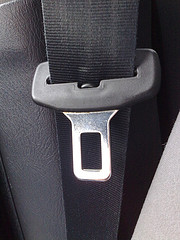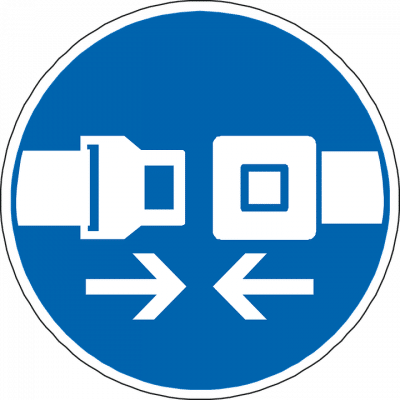According to the National Highway Traffic Safety Administration, seat belts are “the single most effective traffic safety device for preventing death and injury.”
Unfortunately, not everyone takes advantage of his or her seatbelt. In 2009, 89% of drivers reported using their seatbelt in Utah. This is fairly high number, but it certainly could be higher.
For most of us, when we hop in our car, we buckle our seat belts and we drive off—fastening your seat belt in your car is natural and requires little to no conscious thought.
Seat belts are designed to keep us safe, but how did the seat belt come to be? Most people know, and are reminded by large signs on major freeways, that you must buckle your seat belt or you will receive a ticket. The catchy phrase “click it or ticket” reminds us of those laws, but when and why did seat belt laws come into place? This post answers those questions, as well as delves into some additional facts about our handy car safety gadget.
Table of Contents
When and by whom were seat belts invented?
We can trace seat belts as far back to a 19th century inventor and Englishman, Sir George Cayley. The seat belt he created was much different than the one we use in vehicles today; Sir George’s seat belt was created to keep pilots fastened. However, it was not made of the same type of fabric or clasp we use today. Then, in about 1885, a man from New York City patented the first seat belt for automotive vehicles. His reason for its creation: to keep tourists safe. This seat belt was described as a “harness”—its main function was to keep people into place so they did not fall out of their seats while on bumpy roads.
Several other people worked to try to create a seat belt that would do more than just keep someone from moving around while the vehicle was in motion, but it was not until August 1959 that the new seat belt came off the production line, thanks to the inventor Nils Bohlin. He created a seat belt that no longer fastened in the middle, but on the side. Bohlin said of his revolutionary idea:
“The pilots I worked with were willing to put on almost anything to keep them safe in case of a crash, but regular people in cars don’t want to be uncomfortable even for a minute. I realised both the upper and lower body must be held securely in place with one strap across the chest and one across the hips. The belt also needed an immovable anchorage point for the buckle by the occupant’s hip, so it could hold the body properly during a collision. It was a matter of finding a solution that was simple, effective and could be put on conveniently with one hand.”
How do seat belts work?
Car seat belts are designed with a lap and a shoulder belt. When you strap on your seat belt, start to drive, and stop suddenly, the seat belt will you stop you because of inertia—that is, an object’s resistance to changing speed and direction of travel. Everything has its own inertia. For example, when a car accelerates, your body is not moving, but you are in the car experiencing its inertia. Therefore, you feel as if you are moving with the car, but you still have your own inertia. To illustrate this point, let’s say you are driving and you crash your car into a pole. The car will hit the pole and stop right away, but you will be flung forward at whatever speed you were going. Something will try to slow you down. The point of the seat belt is to slow you down at those times. The design was created to spread across all the sturdy points of your body to all the “stopping forces”. The material is designed to be flexible to prevent serious injury to your body when you are stopped by the seat belt.
When and why were seat belt safety laws created?
In the late 1960s, the first seat belt laws were created. According the Department of Transportation’s legislative mandate, these laws did not dictate that a passenger or driver had to wear a seat belt; instead, they were created to make sure that every car was created with a seat belt. New York was the first state in 1984 that required vehicle occupants to wear a seat belt. The purpose was to keep the occupants—especially children—safe in a car accident. Every state in the United States and the District of Columbia has mandatory safety belt laws, excluding New Hampshire. In 28 states and the District of Columbia the seat belt laws cover rear-seat occupants. Another 33 states and the District in Columbia allow police to stop vehicles solely for violating belt-laws. Every single state and the District of Columbia all impose child seat belt laws, however.
What are the laws in Utah?
There is no “primary” enforcement in Utah, which means the police cannot solely stop you for a seat belt violation unless it is for a child under the age of 19 who is not safely strapped. Each person over the age of 16 years in the vehicle is covered by Utah law, no matter where they are seated. Additionally, children in Utah who are 7 years old and younger and shorter than 4’9” must be in a child seat. The maximum base fine for the first offense for child seat laws and adult safety belt laws is $45, but there may be additional fees.
Seat belts keep us safe. A lot of people question the necessity of seatbelts, but they do help prevent many deaths in the United States a year, says the National Traffic Highway Association.
Photo courtesy of Pixabay
Sources:
National Highway Traffic Safety Administration

